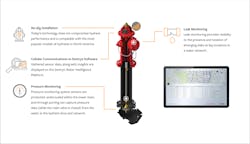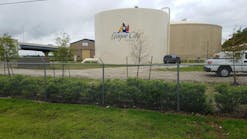Return On Investment (ROI) from digital adoption can be realized in many different ways, yet traditional business practice has been to tie it solely back to dollars and cents. There are, however, other measurables that are equally valuable and can help utilities assess the success of a new technology deployment.
Utilities that leverage all types of insights and data are more likely to build a forward-thinking culture that can address new and existing challenges more quickly. Here are a few non-traditional ROI considerations when thinking about a new technology purchase.
Return On Opportunity
Digital transformation is like a series of stepping stones: when a utility addresses a need, this lends itself to optimizing a secondary need — and so the utility continues delivering a better end result for the customer while creating efficiencies that optimize budgets.
Likewise, when a utility deploys an advanced metering infrastructure (AMI) system to help eliminate the costs associated with manual meter reading and streamline monthly billing, it also improves the overall intelligence of the water network with two-way communication. This enables meters to be remotely controlled and gives utilities near real-time visibility of the water system that can improve customer service. When a technology not only addresses your immediate pain point but addresses a secondary need or opens doors to further opportunities, this additional value should be recognized.
Return on Time
Automating a manual process, like water main flushing to manage water quality, lessens the amount of NRW and can further improve water quality and safety. Moreover, automating a manual task such as this means that no personnel, trucks, or special tools are needed to perform the task. These resources are now freed up to go elsewhere and address other issues on the ever-growing to-do lists of water operators.
Today’s utilities are up against bigger challenges than ever before, which can be overwhelming at times. For the day-to-day management of processes, a proactive approach is more efficient than a reactive approach. A proactive approach gives utilities more time to focus on new issues — such as tightening regulations, depleting resources, or aging infrastructure. Freeing up personnel to address these challenges is vital.
Return on Mission
Every water utility’s mission is to deliver safe drinking water. By connecting infrastructure to technology, this mission can be achieved more efficiently and sustainably. These technology investments are often questioned or rejected on the basis of ROI — but there are now countless technologies that help utilities provide safe drinking water while also providing real benefits.
For example, using technology (sensors, automated control, and analytics) to manage pressure in a water system optimizes the delivery of water pressure to customers when it is needed most. In addition, optimal pressure can reduce leakage, which in turn reduces costs associated with NRW (such as treatment chemicals and energy spent to deliver water that is lost on route) and can extend the life expectancy of assets. With more efficient use of funding, utilities can focus on what they do best — delivering safe, affordable drinking water.
Return on Employee Performance
Technology solutions are designed for improving processes and tracking outcomes. If you give an employee the right tools to do their job, and those tools enable more efficient work processes, employees can get more done. If a work crew achieves optimal results and has the results to show for it, they can be recognized and appreciated for their accomplishments — which goes a long way to boosting morale.
Another challenge facing the water industry today is the imminent exit of an aging work force. This is driving utilities to digitize their knowledge and experience in order to help new employees entering the industry. Younger workforces use technology in just about all aspects of their lives. They expect to have knowledge and insights at their fingertips and are passionate about making the world a better place. Ensuring that field workers have the necessary programs for near real-time data and historical knowledge of the distribution network will be a key differentiator for developing the most efficient and talented work force.
Asking the right questions can streamline the adoption of technology. It helps estimate further impacts on both human capital and environmental impact. Below is a list of questions to help determine if your solution has delivered a positive non-traditional ROI:
- Are you able to do more with less?
- Are you seeing better outcomes after using the new technology?
- Are you seeing a shift from reactive work to proactive work?
- Are your teams getting more work done in a day than before?
- Are you experiencing a decrease in customer complaints or service disruptions?
- Is the new technology helping you with regulatory compliance?
- Are you spending less time on data entry and reporting?
- Are other departments experiencing a positive impact as a result of the new technology?
- Are you able to make better short- and long-term decisions based on the new technology?
- Is the new technology going to support the next generation of workers and help transfer the knowledge from veteran workers?
As we shift our focus to re-imagine and redefine ROI for technology solutions, we need to ensure we are choosing the right solutions to address a need. Three guiding principles will ensure that your technology decisions will stand the test of time.
Centralize Data
Having data sets in one central platform allows you to use the data for many purposes — from monitoring and operating to budgeting and asset management. Ensure that your digital platform is built on open architecture and standardization, so that application programming interfaces (APIs) can retrieve data from any software application. This way you can retrieve historical or active sensor data from legacy systems. In many cases, you don’t need to throw out old information; you can bring it into the new platfor
Align with partners that can grow
The saying, “Here today, gone tomorrow,” is not uncommon in the technology sector. Partnering with trusted vendors that understand the water industry will likely result in a holistic, long-term digital approach.
Leverage your existing infrastructure
While this is obvious, it also makes fiscal sense — not only from the cost of buying new equipment but also the installation and maintenance of new equipment. A lot of water infrastructure was built to last decades and, with maintenance and rehabilitation, that can often be stretched even further than planned. Turning existing infrastructure into digital infrastructure is possible with the addition of sensors. Who ever thought a hydrant would also become a gateway for remote pressure monitoring and leak detection? There is often no need to replace a hydrant — only to retrofit it.
One way water utilities and service providers have embraced digital transformation is through piloting new technologies. For the most part, this has proven to be a successful and conservative approach that allows financial decision makers to approve technology projects. When thinking about whether to implement technology at your utility, consider the bigger picture along with these non-traditional ROIs. WW
About the Author: Yolanda Coleman Kokayi is director of communications for Mueller. She has over 20 years of experience in global marketing and communications, and is a passionate brand leader and change agent for the water industry.
Published in WaterWorld magazine, May 2022.






